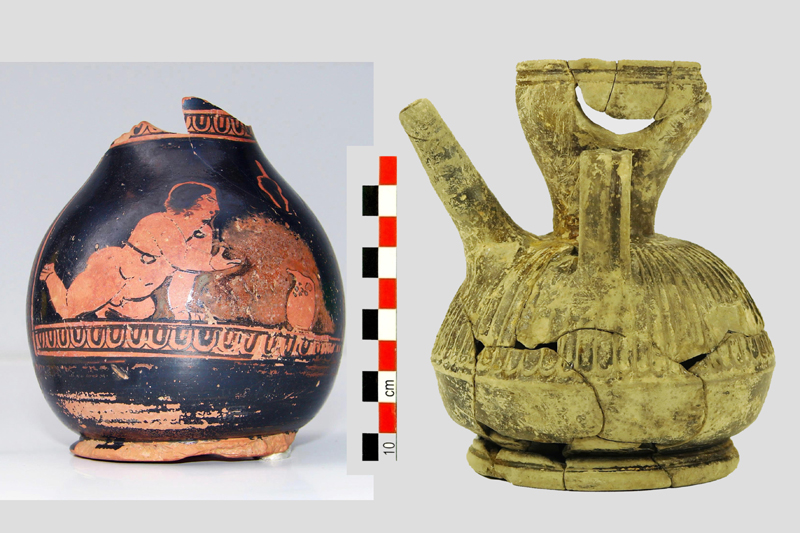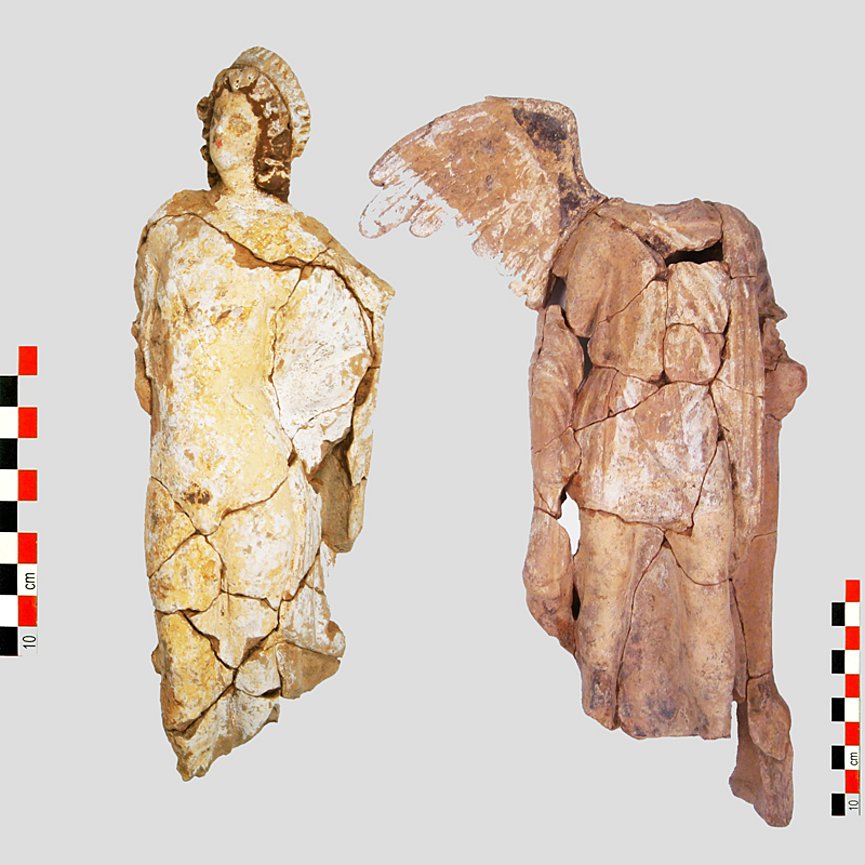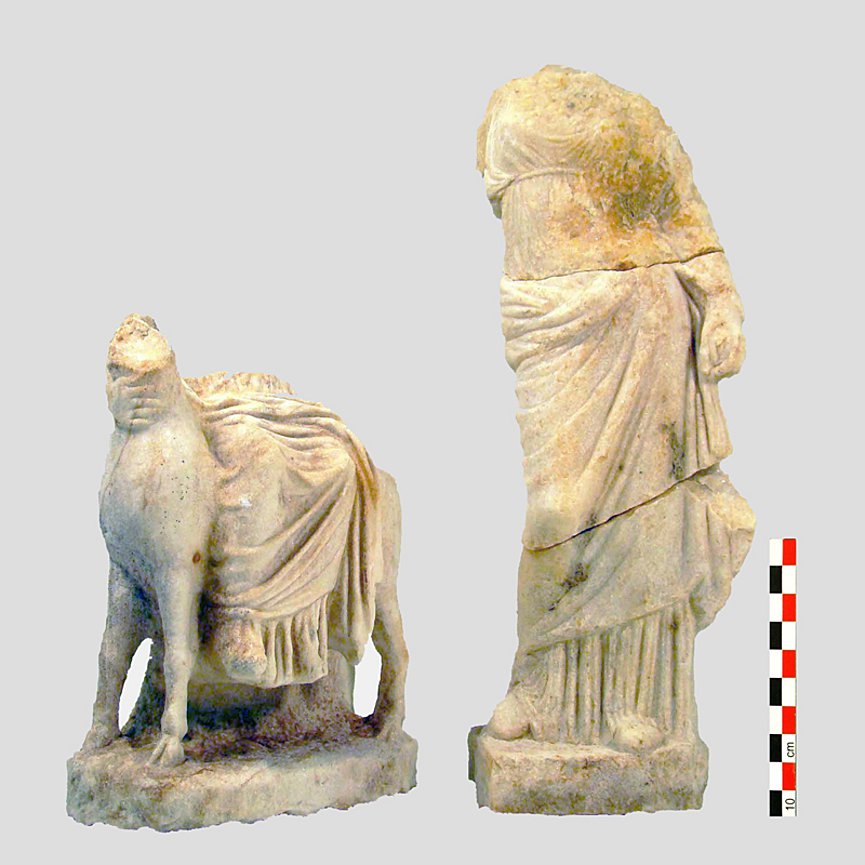ATHENS — The works to extend the Athens metro Line 3 towards Piraeus has included large-scale salvage excavations by archaeologists to depths unusual for such projects, with associated finds that include rare wooden remains from homes and even tree branches of antiquity.
The stations being built in Piraeus and the shafts sunk into the earth have been mostly dug in Piraeus squares and open spaces that had never been built over, coordinator of excavations Giorgos Peppas told the Athens-Macedonian News Agency (ANA-MPA).

As the archaeologist, enthusing over the extent and variety of the finds, says, “Imagine that the station is at a depth of 40 meters or more,” which allowed the exploration of the pits of ancient wells; their bottoms are found at nearly 17-18 meters from the current surface. “We found very rare material – wooden and organic residues, which had remained in the water under the water table for nearly 20 centuries,” he explains.
He adds that the findings “are the largest collection in Greece of wooden objects coming directly from homes – that is, part of furnishings, vessels, tools, structural parts of a home – as well as seeds, pieces of wood, and branches of trees.” A rare find includes a headless, extremely rare wooden statue of the god Hermes dated to the Hellenistic world, found in a well after the sack of the city by the Romans.

The wells of the Hellenistic world, from Alexander the Great’s death in 323 BC to 31 BC, are the source of many of the objects found. Objects relate to “a phase of the city following the 86 BC invasion by the Romans – we found most material from the city destroyed by the Romans in the water cisterns and wells of the city no longer used. In essence, we are finding Hellenistic Piraeus in the wells,” Pappas says. The already conserved material numbers over 4,000, along with 1,400 restored vessels and 1,300 wooden objects.
Excavations have also provided the final identification of the city’s aqueduct, the chronology of which was revealed at the future stop of “Dimotiko Theatro” (the neoclassical Municipal Theater of Piraeus), and the 55-meter-long excavation of the aqueduct’s central tunnel. The excavations reveal a timeline from the aqueduct’s initial construction, believed to have taken place during Hadrian’s rule, until it was abandoned when the Goths invaded.
As Pappas tells ANA-MPA, “We believe the water coursed from Athens through the Long Walls, specifically starting from the Ardittos Hill,” which is by the present Panathenaic Stadium, but further detailing is necessary.
The excavations have brought to light more of the details in the history of ancient Piraeus. In a great and unusual circumstance, the excavation’s conservation work may be observed by the public during the day in the “Xylapothiki” building, the wood-storage space modelled on an ancient Greek shed.

The Xylapothiki building was turned into a laboratory and exhibition space in 2014, in collaboration with the metro construction company. The exhibition, “Stin Epifania” (Brought to light, or to the surface), is open to the public. “It is the only example in Greece where an exhibition works concurrently with an open conservation laboratory. The visitor can watch us carry out our work from above. Xylapothiki is open during the weekends,” the archaeologist/coordinator reveals.
An original stone mosaic floor found at the salvage excavations will be the centerpiece of exhibits at the Dimotiko Theatro stop, under glass, when the station is completed. The main theme will be waterworks and it will supplement the Xylapothiki exhibition. With eight different salvage excavations carried out within the area of ancient Piraeus, Peppas says, which roughly corresponds to the modern port city, the volume of salvaged material is massive; the Dimotiko Theatro station excavation alone is 0.5 hectares (5 stremmas).
Speaking to ANA-MPA on behalf of Attiko Metro, head of the extension of Line 3 Evangelos Kolovos says that the large-scale salvage project proves that “the technical construction work of the metro can be combined harmoniously and yield impressive results along with the archaeological excavation.”
Noting that the construction contract included a 3-million-euro budget for salvage excavations, Kolovos notes two most moving moments at the excavations: “The first was a ring that I held as soon as it came out of the earth. The other was the bones of a rooster, which someone had sacrificed 2,000 years ago at the foundations of a home (…), a tradition that was followed for eons to recent years. It was truly moving and impressive.”